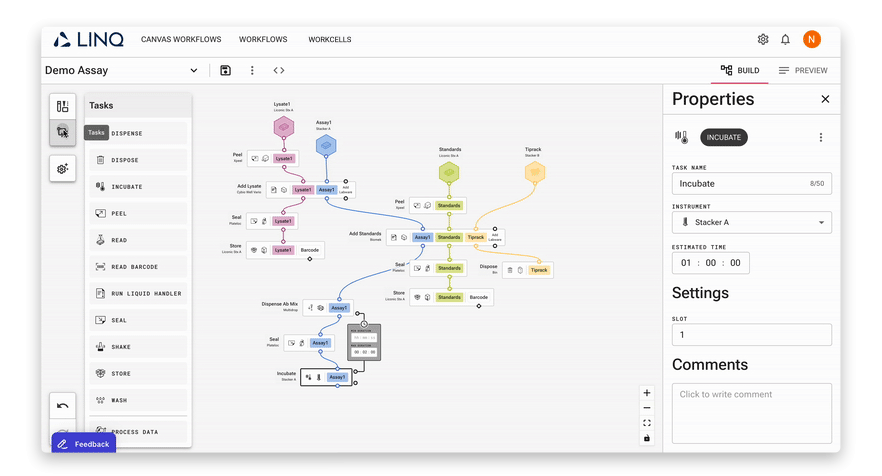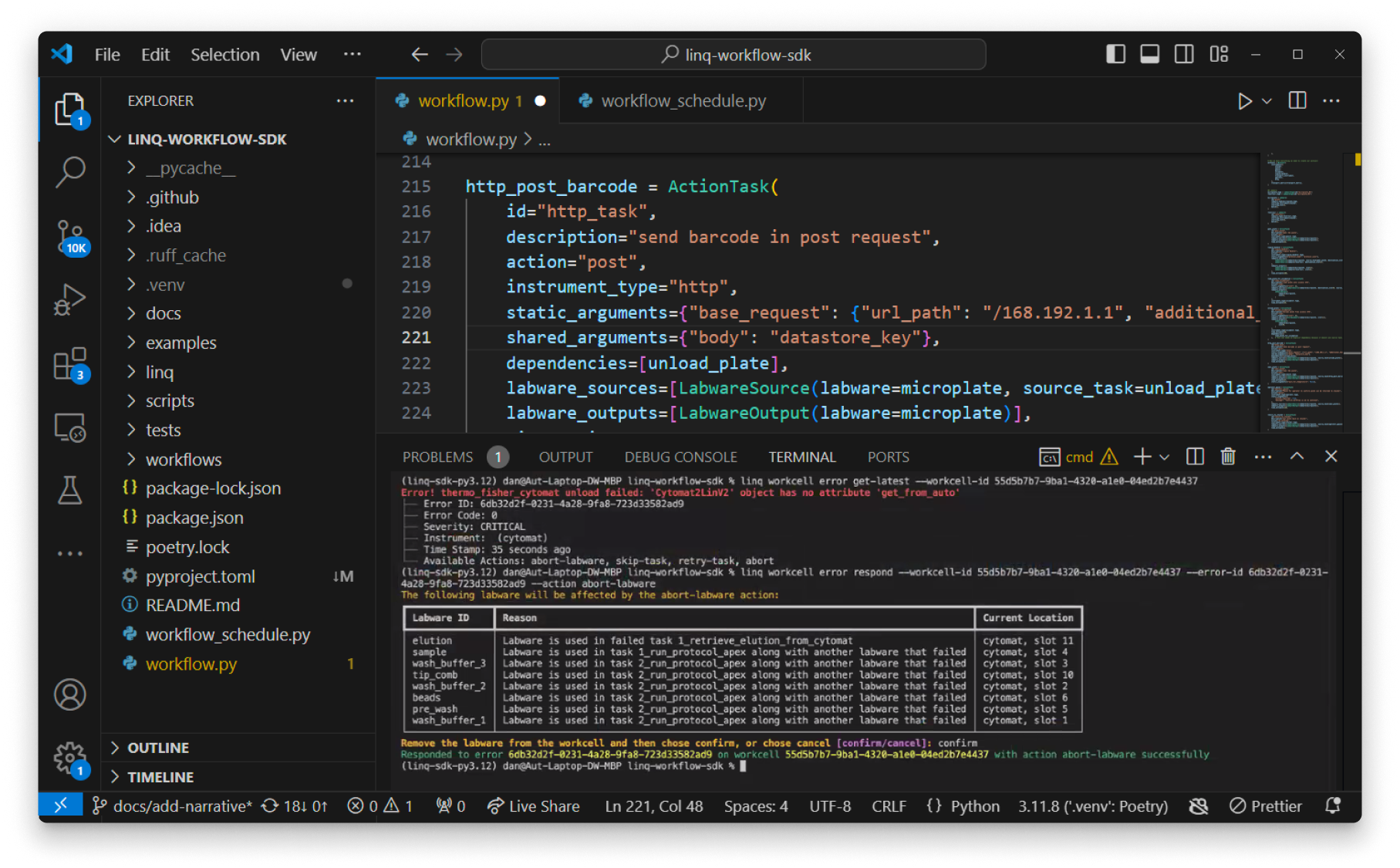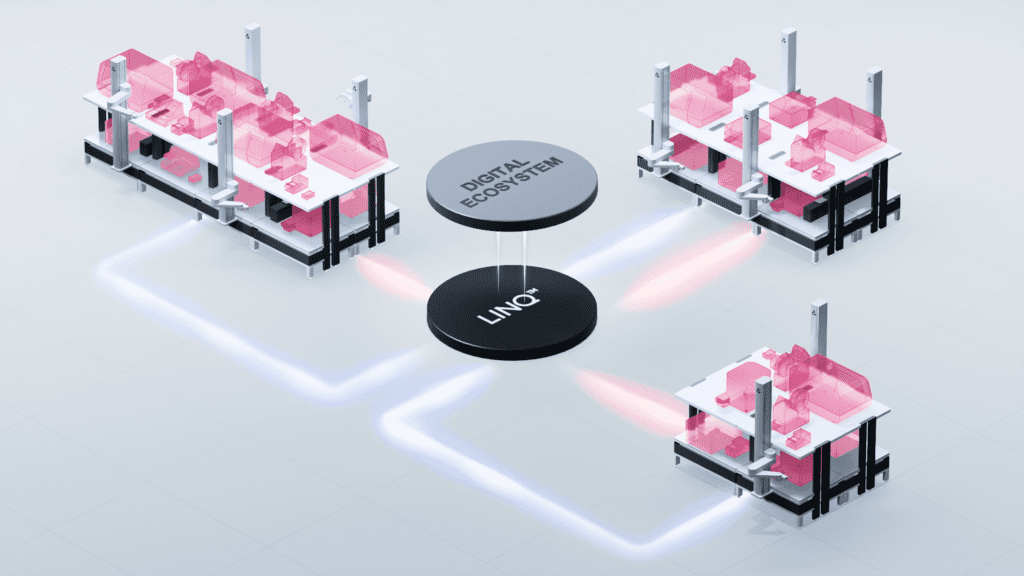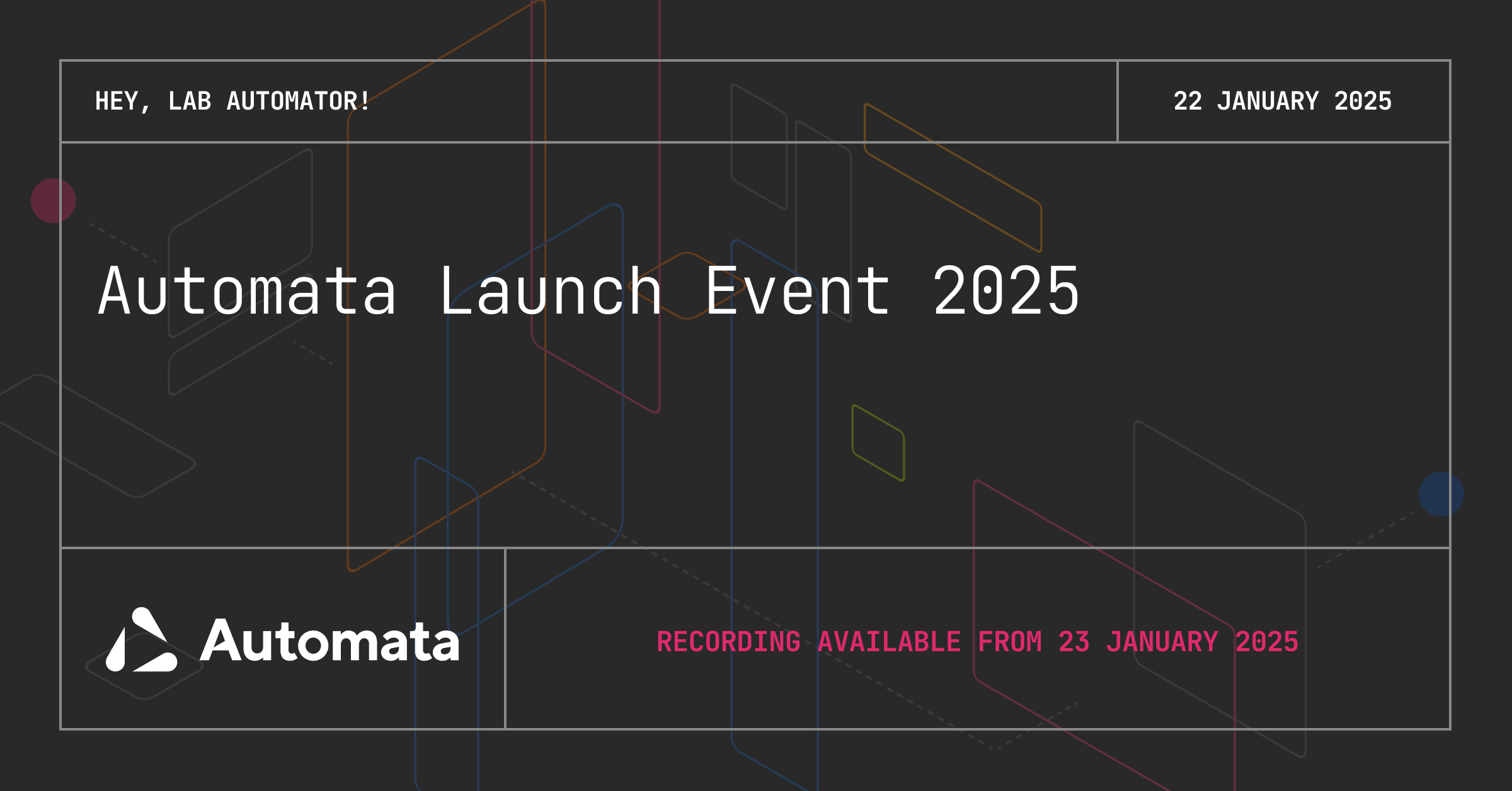Introducing the new generation of LINQ
Watch Automata’s Launch Event 2025 (recording available from 23 January 2025)
Running automation in a lab can be a struggle. How recently did you ask yourself in exasperation, ‘Isn’t there an easier way to do this?!’
Scientists deserve better—automation tools that allow researchers, automators, and developers to do more. At Automata, we’ve always believed that automation tools should simplify your workflows while driving unmatched precision and efficiency with every action.
But, too often, the tools available are restrictive, unintuitive, or unable to keep up with the evolving needs of modern labs.
That’s why we developed the lab automation platform LINQ. The first generation created workcells that could fit in any lab by designing around the lab bench; and it reduced software restrictions by giving users direct control of instruments with python workflows.
The market reception was remarkable. LINQ Bench’s design and functionality captured the imagination and it removed many of the physical barriers that were holding labs back. The raw pythonic approach to workflows enabled code-savvy automators to solve their own unique challenges.
But there were also some clear limitations. Most critically, only those proficient in python could take advantage of it. Secondly, users were having to do too much workflow optimization by hand. And finally, although python workflows enabled customization within LINQ, it was still too closed.
We recognized that, while powerful, LINQ needed to become more intuitive, more open, and more intelligent.
Building LINQ: unmatched power, unrivalled simplicity
The new generation of LINQ was built to answer two simple questions. How do we make life easier for the automation community, and how can we put more power into their hands?
Answering those questions meant building a platform that:
- Supports everyone—whether you’re an automation novice or an expert coder
- Opens up the platform—so you can build around it rather than be constrained by it
- Is ready for scale—because labs are going beyond single workcell setups
Using these core principles, the next generation of LINQ aims to give automation teams the power and means to turn their labs into data powerhouses.
A closer look at LINQ: the new generation
Supporting everyone—from novice to expert
Accessibility is a major barrier to adopting automation and users often revert to manual methods if they’re unable to easily set up a workflow.
The debate between code-based versus no-code automation has persisted within the lab automation community for years. Today, we’re putting an end to it by giving users both options—no more trade-offs.
The new generation of LINQ has both:
- A simplified, node-based workflow canvas for quick and easy workflow creation through an intuitive drag-and-drop interface.

- A Python software developer kit (SDK), giving developers unparalleled customization and control of their workcells.

By building both of these interfaces on top of an industry-first intelligent scheduling engine, we can reduce the complexity behind developing and optimizing new workflows, making LINQ workcells simultaneously more accessible, flexible, and intelligent.
The best products let communities build with them and around them. It is something developers and automation specialists in labs have been asking for, for a long time.
Openness: building without limits
In the rapidly evolving digital ecosystem, modern labs require automation systems that can easily integrate into everything from databases to machine learning tools.
That’s why we built the new generation of LINQ on an open platform.
We’re giving developers full control over workflow creation, workcell management, and data integration. We created a Python SDK for LINQ’s REST API, making LINQ’s capabilities accessible via the most popular programming language in labs.
We’re also eliminating the gatekeeping by providing full, public access to the developer documentation.
Openness matters to us because we understand every lab has different needs, and we want you to have the power to overcome each unique challenge you face.
So, if you want a Slack notification for when your experiment finishes? You can code it.
Need to integrate an AI tool to evaluate data and update a workflow? You can build it in.
If you could code anything for your lab, what would you create? We’re giving you that power.
Scalability: beyond single workcells
Over the last decade, labs have pushed well beyond single-workcell deployments. However, most platforms aren’t built with that in mind.
Scaling workcells has been a central tenet of LINQ’s design since we began our journey. The LINQ Bench hardware is a standardized, ultra-configurable system built to streamline the design, deployment, and ongoing support of workcells. LINQ’s cloud-native architecture allows centralized collaboration and management from any place and at any time.
With lab footprint at an ever-increasing premium, the new generation of LINQ Bench takes configuration flexibility and workcell density to the next level. Labs can double or even triple their instrument capacity within the same space.

This is just the beginning
The new generation of LINQ is a big step forward in our mission to give science the automation tools it deserves, but we also know how much further there is to go.
The questions that drive us—how to make life easier and put more power in automation users hands —are never fully answered. New challenges and technologies arise every day.
That’s why we’re rapidly expanding our development team and adding new functionality every month.
To finish, I want to say thank you to all the existing users of LINQ; your feedback and support continue to be invaluable. You have been the drivers of this new generation.
And to those who aren’t yet users, we hope to get the chance to work with you soon. If you want to know more about LINQ and its expanded capabilities, please book a meeting with one of our automation experts today.

